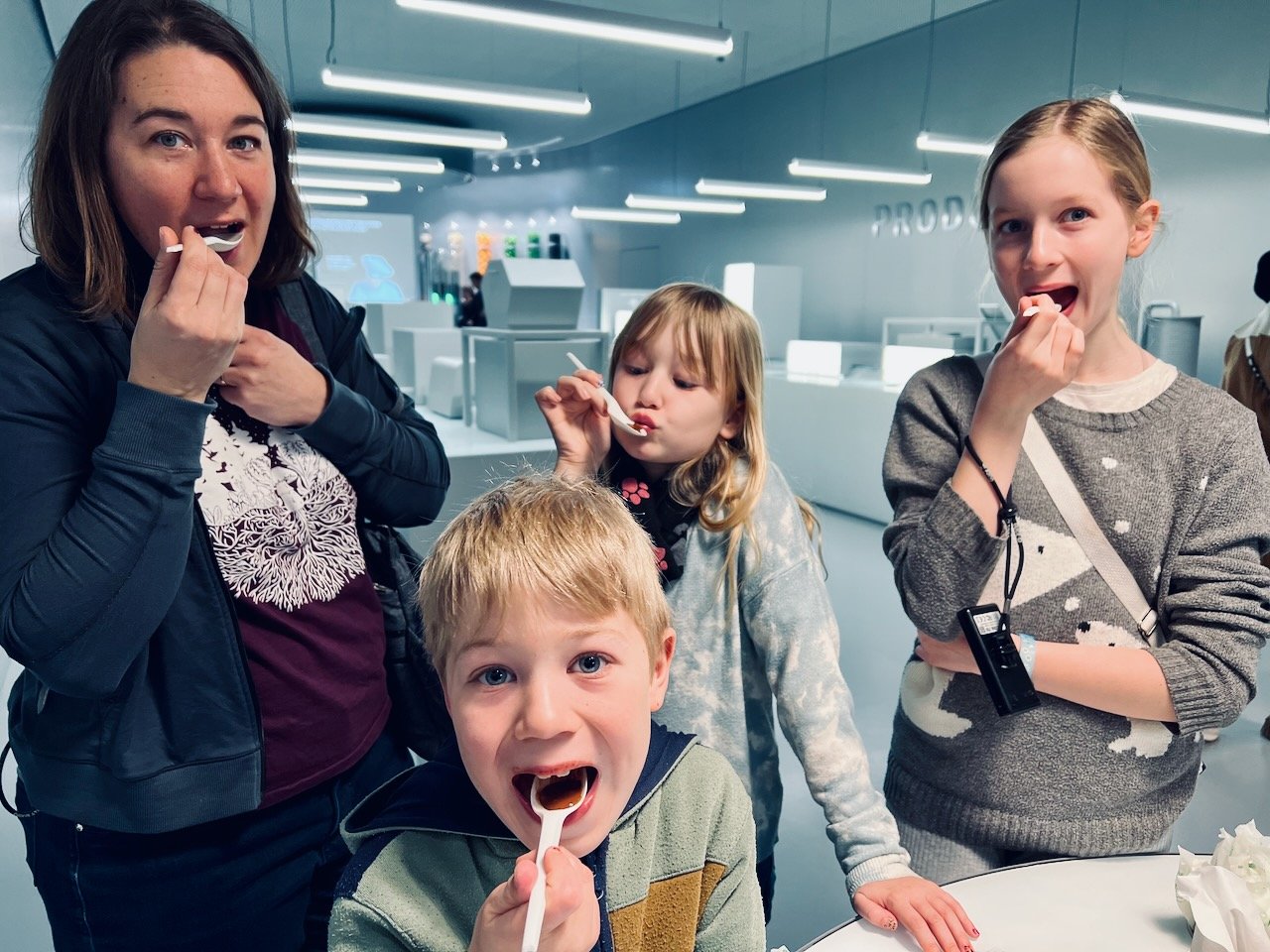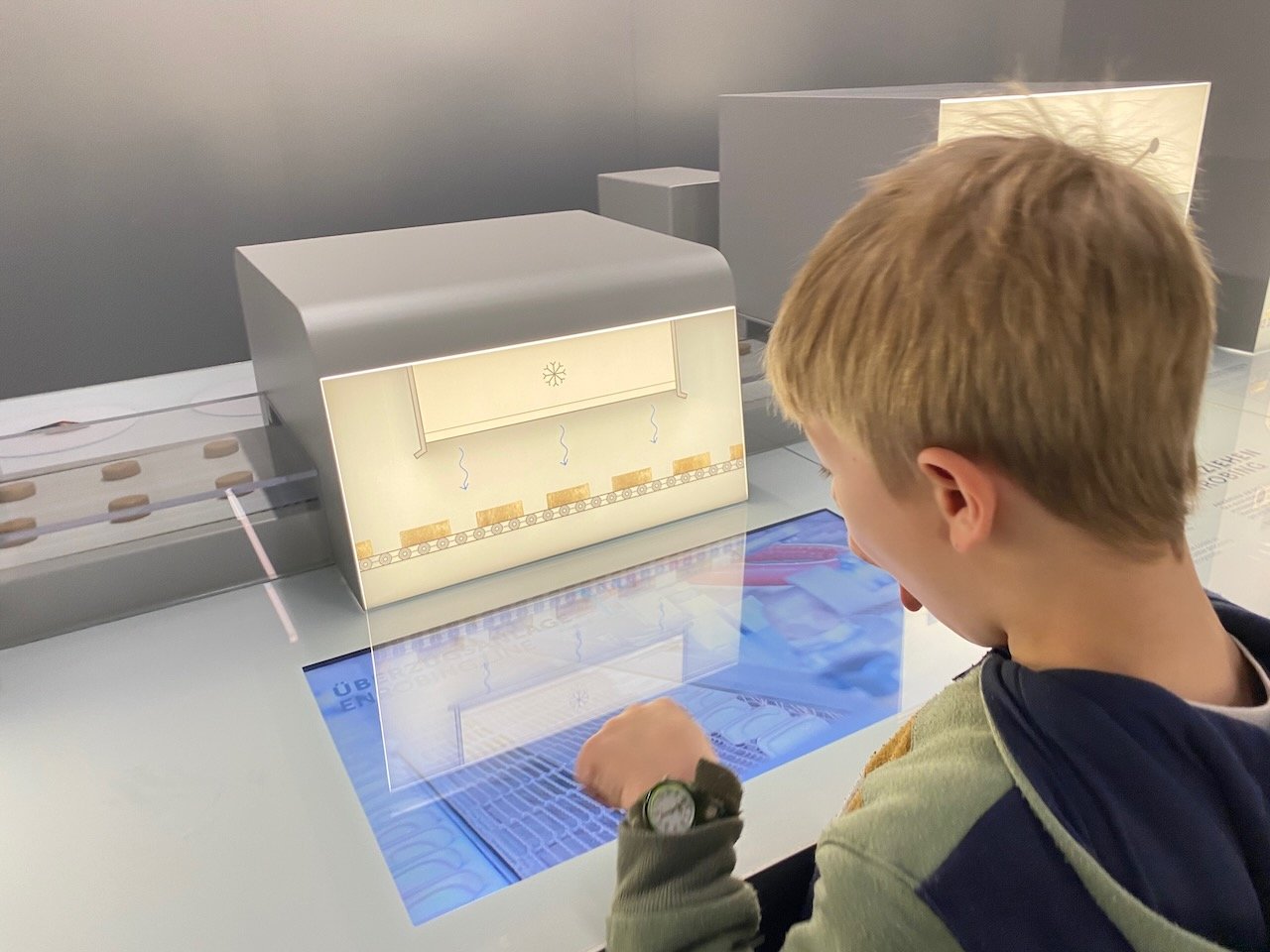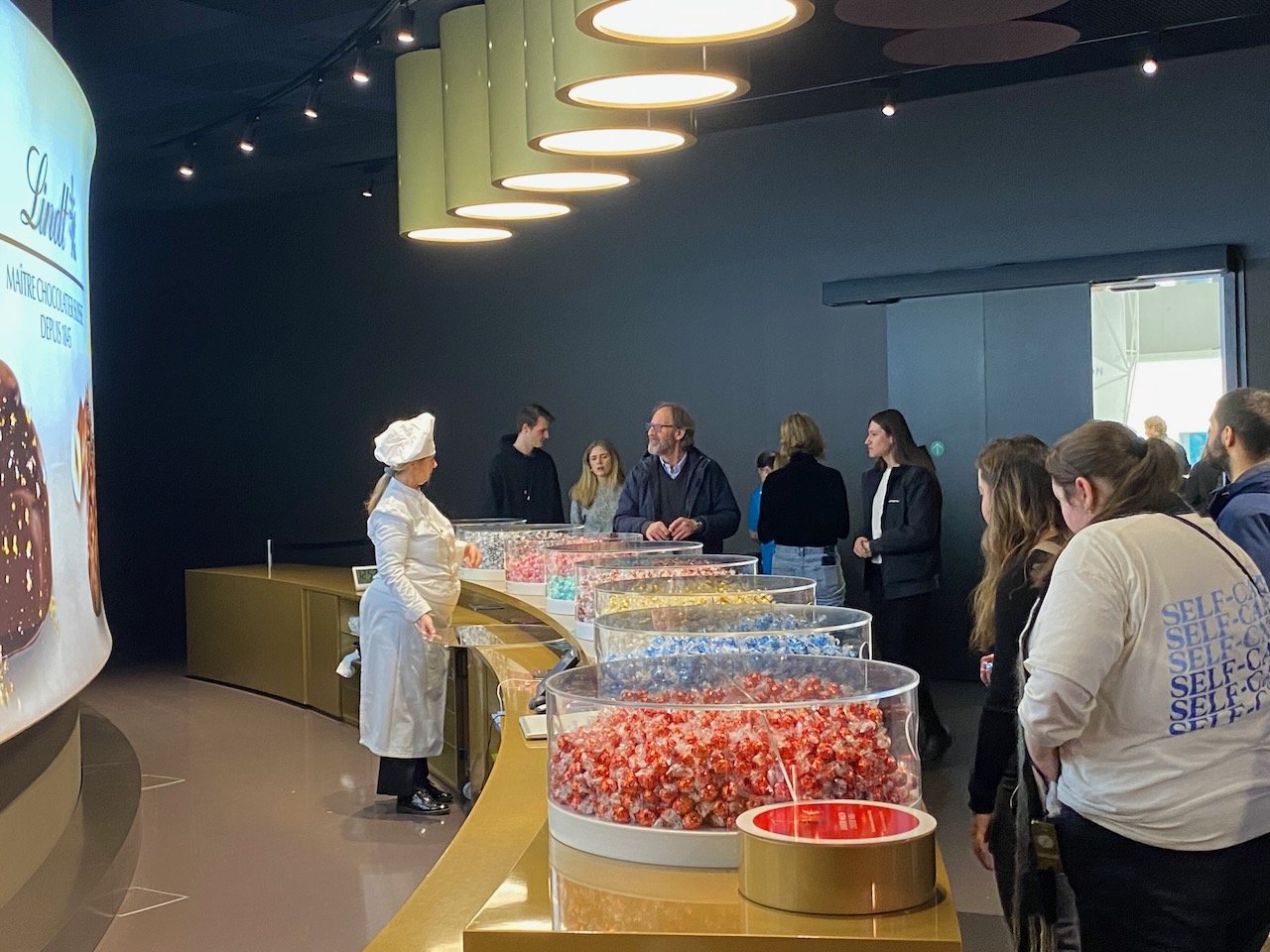We took the train from Milan all the way to Zurich, Switzerland partly because it was “on the way home” but mostly because I really, really hoped to see some of the Swiss Alps, even if from the window of a moving train. The trip did not disappoint! We had a busy first train that took us past Lake Como (we can see why the wealthy like it) and dropped us off at a town that is technically half in Italy and half in Switzerland. The second train was spacious, fancy, and super comfortable. We rode through the longest train tunnel in the world, measuring 57km. But at both ends of that tunnel were gorgeous mountain lakes, towns, and peaks of the Alps!
We had a little attic apartment with slanted roofs and lovely décor. Being a Sunday, all stores were closed, including grocery stores. So we found a few essentials at a small convenience store at the train station and made some food in our apartment. Over dinner we debated our next day’s itinerary. Erik discovered that Lichtenstein was only a few hours’ drive away and was suddenly eager to go. A few of us shared that eagerness while a few others were hoping to visit the Lindt Factory that was close to the city. In the end, the chocolate factory won!
We took a local train to the factory. During the walk up to the front door, we could smell the chocolate in the air! The main entrance was grand and housed a large (9m high) chocolate fountain containing 1500 kg of flowing chocolate! Yowza! We were given a complementary chocolate at the ticket counter, shown where we could store our coats and bags (free of charge), and pointed toward the audio guide stand where we simply had to tap the device on the language of choice to get it started. So posh!
The tour was self-guided and started with a detailed display of where cacao beans are grown, how they are harvested, and all the steps that are needed before it comes to Switzerland. I was also pleased to see that the museum touched on some environmental aspects and social aspects of farming cacao in Ghana. It transitioned into how cacao was brought to Europe via the Spanish transporting some back from central America. Again, this exhibit didn’t tiptoe around some of the horrific history of cacao agriculture and trade and was open about the negative impacts on Mayan and Aztec peoples. They also provided a timeline of cacao’s popularity, its original uses, and when chocolate became a “Swiss thing”.
Here's the quick synopsis: a few key inventions in the 18th and 19th centuries led to solid milk chocolate where majority of chocolate was served as an artisanal drink. One pioneering mind (Henri Nestlé) found a way to make condensed milk thus allowing for milk to be safely transported to manufacturing area. Another mind combined that condensed milk with cacao and sugar to create a solid form. A third great mind (Rodolphe Lindt) invented conching; a mechanized way of stirring to ensure the cocoa butter is well mixed and “polished” which creates a smooth texture. And so, with new inventions, safe storage of milk-based products, and a new love of the sweet treat, many chocolatiers began their long-standing businesses of manufacturing chocolate in Switzerland. Oh, and of course, some smart marketing helped!
Once we knew why Switzerland was so popular for chocolate, we entered the “how we make our chocolate” room, and that was our FAVOURITE room of all! It started with three large columns of the three main chocolates: white, milk, and dark. The compositions of each were on the wall for us to see. For example, milk chocolate has the same amount of milk powder and sugar as white chocolate, but has more cocoa mass and less cocoa butter than white chocolate. At each column were spouts and packaged spoons. You were encouraged to take a spoon and pour samples of each kind of chocolate onto your spoon. The toughest part was stopping. Next to the columns of awesomeness were part digital and part mechanical displays of chocolates going through an assembly line from being poured into molds to getting “blinged” with decorative nuts or swirls. Then came the nest testing station. We had to hold our hand under an unmarked tube to receive a piece of one of the many solid bars Lindt produces. We were encouraged to taste it and see if we could guess its flavour. Our first one was salted caramel and we all guessed it right away. The next was orange but only a few of us picked up the orange flavour. This continued until we’d felt we’d had our “share” of free chocolate.
The next room shared a bit of information about marketing and the history of Lindt as a company. And then, like opening the gates of heaven, we walked into a room full of Lindt Lindor chocolates laid out for us to sample. “Have as many as you wish” said the lovely lady answering questions about the flavours laid out. So we filled our pockets with at least one of each (I believe there were 12 flavours out for us to try) and a few extra of our favourite favourites.
Once all available pocket spaces were full, we found ourselves in an exhibit demonstrating some of the future plans for chocolate production as well as some thoughts about climate change and adaptation. The final stop of the tour is an interactive display where you scan your ticket and a physical ball drops into a Rube Goldburg-like system of chain reactions ending when the ball falls into a screen of a chocolate chef who catches it, opens it, and reveals a square chocolate which they drop into a vending-machine slot that you reach into to receive. We were literally out of pocket space for these chocolates so we had to eat them. From there we ended up in the largest Lindt chocolate store in the world. Yes, I did buy more, specifically flavours I’ve never seen in Canada such as mango and lemon meringue, because why not!?
Feeling ill with sugar overload, we went back to Zurich to have a walk around the downtown. It was still fairly quiet but we got to see some of the city in action. There are electric trams operating everywhere and the rail system is pretty accessible to reach the suburbs. We couldn’t agree on what to do next – perhaps it was the result of sugar overload – so we ended up just going home after eating a large, German sausage dog. Yum.
That’s it. Our visit was way too short but very sweet (pun intended). I’m personally eager to go back again and see more of this country, but we have to build up the bank account first if we want to stay longer. Until next time! Oh, and you can see the flowing fountain in our video here.

























